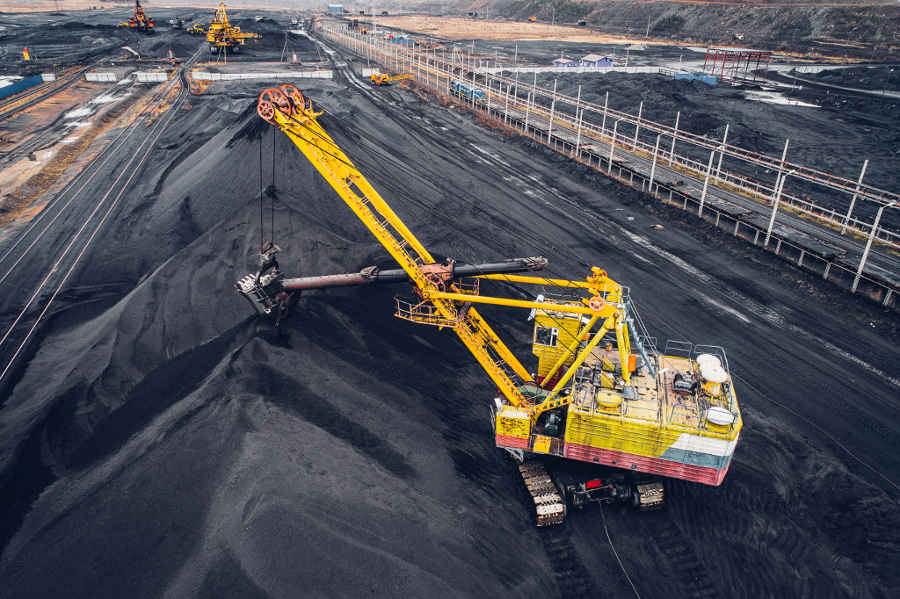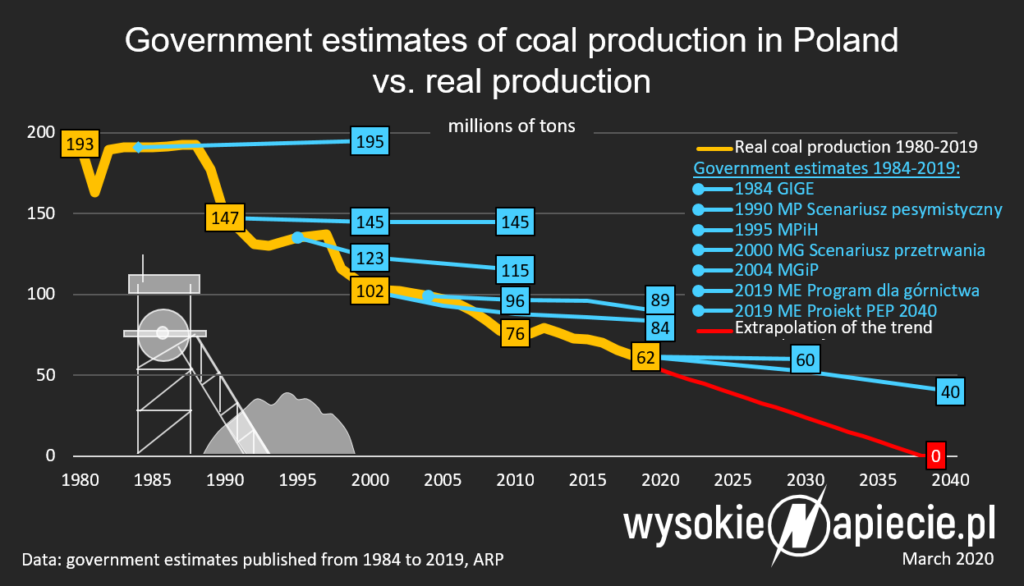Spis treści
For years, Poland has rightly been regarded as the EU’s main climate laggard. At a meeting of EU leaders in December 2019, Warsaw vehemently opposed the idea of including a 2050 climate neutrality target in the official conclusions. Negotiations resulted in an astounding piece of diplomatic semantics: while Poland accepted the EU-wide objective, the document stated that “one member state could not commit to implement it”.
A year later, Warsaw accepted conclusions agreeing to increase the EU 2030 greenhouse gas reduction target from 40% to 55% compared with 1990 levels. The most important consequence of this target will be a radical increase in the price of carbon in the EU Emissions Trading System (ETS). By 2030, it could be as high as €50–70 a tonne, compared with €33 a tonne at the end of January 2021, making coal-fired power generation completely unprofitable and raising huge economic questions even over gas-fired plants.
Since Poland’s energy system will need at least some of its coal plants to operate over the next ten years, the country is facing the highest wholesale electricity prices in Europe. Today, Poland imports about ten terawatt-hours (TWh) of electricity, at a lower price than that produced domestically by coal. This figure could rise to around 40TWh, suggests one state-owned energy company, equivalent to almost a quarter of domestic electricity consumption, in a bid to keep prices down.
Since such consequences are the result of a higher climate action target, it seems odd the Polish government did nothing to try and block it. What has changed since 2019?
Coal as a downward spiral
First, the 2019 summit took place before the presidential election in Poland and coalition parties did not want to turn away voters associated with coal and traditional power generation. Polish coal mining has suffered a devastating financial collapse related to the growing share of green energy and gas. The government is aware mining is a dead-end sector and its main objective is to avert protests and strikes.
Secondly, by 2020, state-owned energy companies had changed their tune. Having previously pushed the government to maintain a hard line anti-climate action approach, they too have realised that sticking to coal is a downward spiral that will ultimately lead to bankruptcy.
The largest state-owned companies, including PGE and fuel giant PKN Orlen, have all declared 2050 climate neutrality targets. Some, including the biggest, PGE, would gladly give their coal-fired power plants to the state, but the government is likewise at a loss about how to maintain them in the face of ever more stringent EU climate regulations.
Poland’s attention is therefore moving to securing greater support from EU funds to finance its energy transition.
In 2014, the EU established a Modernisation Fund, financed by the sale of 2% of the EU ETS’s allowances for the benefit of countries in central and eastern Europe. (Warsaw has suggested this figure should be increased to as much as 8%.) Poland will also benefit to the tune of around €4bn from a Just Transition Fund worth €17.5bn. Half of this money will be blocked, however, until the Polish government agrees to accept the 2050 climate neutrality goal at EU and domestic level.
Need for a clear plan
If Warsaw is to get more money out of Brussels, it will need to detail how it plans to quit coal. This is proving tricky. The government’s negotiations with mining unions resulted in an agreement that means coal mines should close by 2049. This is an unrealistic deadline that fails to account for dwindling demand.
Today, Poland’s power plants use around 30 million tonnes of coal a year. By 2022, demand should fall by around seven million tonnes as coal is displaced by wind and solar photovoltaic (PV) power. By 2040, Poland will most likely have, at most, one or two coal mines left in operation. Over the same period, lignite mines and lignite-fired power plants will also disappear as deposits currently being explored are depleted.
However, an organised exit from coal is vital, not least because around 83,000 people still work in the mining sector, with 73,000 extracting thermal coal. Miners have traditionally enjoyed high social status and earnings well above the country’s average. Attempts to restructure the sector following the fall of communism in 1989 have been incomplete and invariably belated, with social objectives, such as maintaining jobs, outweighing economic results.
A just transition
Energy security concerns have been used to justify this approach, with unions often glossing over mining’s poor economics. The government offers social protection measures for miners forced to leave work, such as early retirement, but the ten trade unions representing the sector generally refuse to agree on restructuring measures. The largest trade union in Poland, ‘Solidarity’, derives 40% of its income from miners’ membership fees – the outflow of people from the sector could threaten its very existence.
Silesia, with a population of around 2.5 million, is the most densely populated and urbanised part of Poland. In recent years, it has played a big role in national politics with the same party being in power locally and nationwide, and defending coal has been one of its raisons d’être.
However, the defence of miners in this way is outdated and misguided.
Most miners are not physical labourers, but electricians, mechanics or construction workers. The labour market will absorb them – although they might not earn as much outside mining companies that benefit from various subsidies.
The financial condition of coal-fired power plants is steadily deteriorating. Closing them down without securing comparable jobs for workers will mean the degradation of regions where they are often the largest employer and an outflow of mainly young people.
Shifting politics
Restructuring the country’s three lignite basins – Bełchatów in central Poland, home to the EU’s largest coal-fired power plant with a capacity of 5,400MW – and Turów and Konin in western Poland will pose the biggest problems. They support tens of thousands of jobs, and wind and solar PV farms are unlikely to absorb all workers.
However, the transition in people’s minds is happening faster than that taking place on the ground. The average age of lignite plant employees is over 40 and young energy engineers are reluctant to work in coal-fired plants, knowing the sector has no future. With proper support from the EU and a planned exit from coal, the country can manage this transition.
Politicians and power have a symbiotic relationship in Poland. For the past ten years, being nominated for an executive post at an energy company was impossible without the backing of ruling party politicians; indeed many of these managers are former politicians. Once appointed, they hire people designated by the party and offer financial support to various local initiatives.
The energy transition would diminish the financial power and role of state-owned energy companies and is, therefore, seen by many politicians as a threat to their authority and influence on voters. Nevertheless, there is a growing number of people who are convinced the transition is unavoidable and the time of coal has come to an end.
Text written especially for the energymonitor.ai















